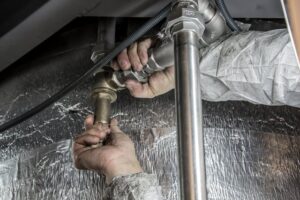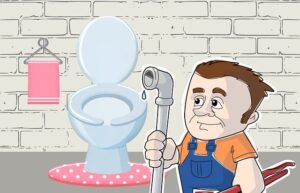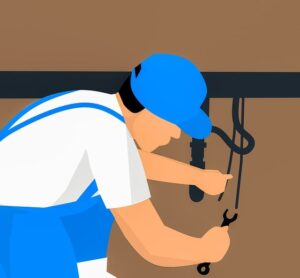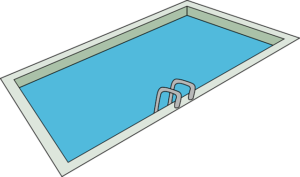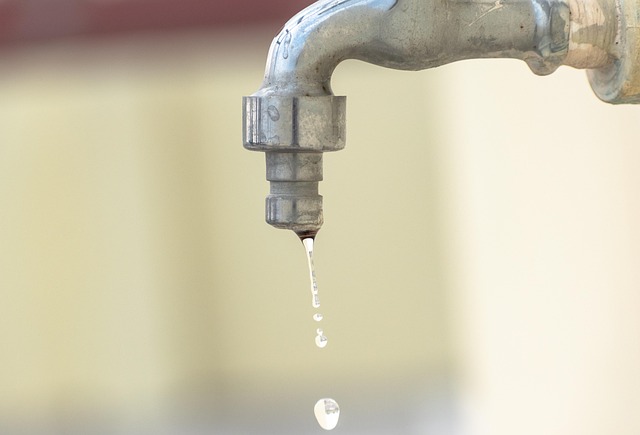
Think a leaking tap is just a small annoyance? Think again. That slow, rhythmic drip you’ve been ignoring could be quietly draining more than just water. It’s wasting money, adding pressure to local infrastructure, and contributing to a much bigger environmental problem.
Many households live with minor plumbing issues for years, unaware of the scale of waste happening right under their nose. A single leaking tap might not seem urgent, but when you take a closer look at the numbers, the impact becomes hard to ignore.
A Hidden Drain on Your Budget
It doesn’t take a flood to raise your water bill. A tap leaking once every second can waste more than 20,000 litres a year. That’s enough to fill a small backyard pool. And if your household pays for water usage, you’re literally paying for water you didn’t even use.
The issue isn’t just the cost per litre. Utility bills often include service charges, tiered pricing, or excess usage fees that kick in once you cross certain thresholds. That quiet leak could be the reason your water charges keep creeping up quarter after quarter.
Now imagine more than one tap leaking. Multiply that by weeks, then months. The expense starts to snowball. And all of it is avoidable.
Not Just Your Problem
Leaking taps Mornington Peninsula and beyond don’t only affect properties themselves. They also affect the community. Water supply systems are designed to meet demand, and when large amounts of water are wasted at the household level, it creates unnecessary stress on the infrastructure.
More water needs to be treated, transported, and stored. This increases the wear and tear on public systems and uses up energy that could be directed elsewhere. Water treatment facilities work harder than needed, often relying on electricity generated from non-renewable sources. So a leak in your kitchen isn’t just a household issue, it’s a contributor to broader energy waste.
In places facing drought or water restrictions, this waste becomes even more serious. Every drop counts when storage levels fall. And if local authorities are forced to limit usage or invest in water-saving infrastructure, the costs eventually find their way back to the public.
Damage You Don’t See
Beyond the water itself, leaking taps can lead to long-term damage around the house. The constant moisture may seem minor at first, but over time it can:
- Warp wooden cabinetry – Waterlogged timber swells, cracks, and eventually rots.
- Stain surfaces – Sinks, basins, and countertops can discolour if water pools or splashes continuously.
- Encourage mould growth – Damp areas create ideal conditions for mould and mildew, which are not only unpleasant but can also pose health risks.
- Corrode plumbing fixtures – The minerals in water can erode metal parts faster when they’re exposed continuously, shortening the life of your fixtures.
These are not problems that fix themselves. Small repairs left too long often lead to bigger replacements, whether it’s a benchtop, cabinet door, or section of plumbing. What starts as a dripping tap can end with a full bathroom refit.
The Psychology of Ignoring Leaks
There’s a strange comfort in tolerating a leak. It’s background noise, easy to tune out, especially if you’re used to it. Many people delay repairs because it seems like a hassle, or they assume it’s not worth the effort or cost. In truth, fixing a leaking tap is often one of the simplest plumbing jobs.
The real challenge isn’t technical, it’s psychological. People tend to avoid small problems until they become urgent. But when it comes to leaks, urgency doesn’t always show up with a bang. It drips slowly and invisibly into your budget, your home, and your environment.
How to Spot and Solve the Issue?
Even if you don’t see an obvious drip, not all leaks are visible. Some signs that suggest you should take a closer look:
- Unexpectedly high water bills – A sudden rise without extra usage could signal a leak somewhere.
- Stains or dampness under sinks – These often go unnoticed unless you physically check the cupboard or vanity.
- The sound of dripping or running water – Especially when all taps are turned off.
- Loose or corroded tap fittings – Even a slight wobble or greenish tinge around metal parts can indicate a slow leak.
Fixing a leaking tap usually involves replacing washers, cartridges, or seals. These are low-cost parts that make a big difference. In some cases, the tap may need to be replaced entirely, especially if it’s old or rusted. Either way, the cost is far less than what you’ll pay over time if you let the leak continue.
Why It’s Everyone’s Responsibility?
We often think of water efficiency as a public issue, but it begins at home. Every household has a role to play. The total amount of water wasted by leaking taps across suburbs, cities, and countries is enormous. But the good news? Every fix counts.
Reducing waste doesn’t always mean cutting back or compromising comfort. Sometimes, it just means tightening a fitting, replacing a part, or making a call.
And if you rent? You’re still not off the hook. Landlords are responsible for maintaining plumbing, but tenants are usually required to report any faults. Don’t leave it hoping someone else will deal with it. Raise it early, before it turns into something more complicated.
A Drip Can Be the Start of a Flood
It’s easy to overlook a leaking tap. The sound becomes normal. The water disappears down the drain. The bill seems only slightly higher than usual.
But when you step back and look at the bigger picture, it’s clear how damaging a simple leak can be. Wasted water, higher bills, strain on infrastructure, home damage, and environmental impact… all of it from something most people could fix in under an hour.
So if you’ve got a tap that won’t stop dripping, take it seriously. It’s not just a minor irritation. It’s a warning sign.
Fix the drip before it floods your budget.

